
Scooby-Doo is an American media franchise owned by Warner Bros. Entertainment and created in 1969 by writers Joe Ruby and Ken Spears through their animated series, Scooby-Doo, Where Are You!, for Hanna-Barbera. The series features four teenagers: Fred Jones, Daphne Blake, Velma Dinkley, and Shaggy Rogers, and their talking Great Dane named Scooby-Doo, who solve mysteries involving supposedly supernatural creatures through a series of antics and missteps, while traveling using a brightly colored van called the "Mystery Machine". The franchise has several live-action films and shows.
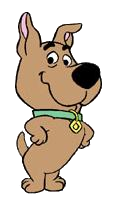
Scrappy-Doo is a fictional character in the Scooby-Doo franchise. He is a Great Dane puppy created by Hanna-Barbera Productions in 1979 and the nephew of Scooby-Doo in various incarnations of the Scooby-Doo cartoon series. Lennie Weinrib provided his voice for one season in 1979, and from 1980 on it was performed by Don Messick. In the first live-action theatrical film, video games, and commercials, he was voiced by Scott Innes, and portrayed by Rowan Atkinson when disguised as Mondavarious.

Top Cat is an American animated sitcom produced by Hanna-Barbera Productions and originally broadcast in prime time on the ABC network. It aired in a weekly evening time slot from September 27, 1961, to April 18, 1962, for a single season of 30 episodes. The show was a ratings failure in prime time, but became successful upon its time on Saturday morning television. The show also became very popular in Latin American countries, and the United Kingdom.

Josie and the Pussycats is an American animated television series based upon the Archie Comics comic book series of the same name created by Dan DeCarlo. Produced for Saturday morning television by Hanna-Barbera Productions, 16 episodes of Josie and the Pussycats aired on CBS during the 1970–71 television season and were rerun during the 1971–72 season.

Captain Caveman and the Teen Angels is an American animated mystery comedy series created by Joe Ruby and Ken Spears and produced by Hanna-Barbera Productions for ABC. The series aired during the network's Saturday morning schedule from September 10, 1977, to June 21, 1980. All 40 episodes are available on the Boomerang subscription app.
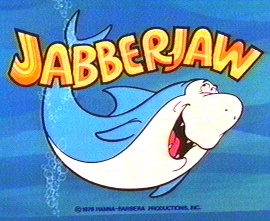
Jabberjaw is an American animated television series created by Joe Ruby and Ken Spears and produced by Hanna-Barbera which aired 16 original episodes on ABC from September 11 to December 18, 1976. Reruns continued on ABC until September 3, 1978.

Dynomutt, Dog Wonder is an American animated television series created by Joe Ruby and Ken Spears and produced by Hanna-Barbera Productions that aired on ABC from 1976 to 1977. The show centers on a Batman-esque superhero, the Blue Falcon, and his assistant, Dynomutt, a bumbling, yet effective robotic dog who can produce a seemingly infinite number of mechanical devices from his body. As with many other animated superheroes of the era, no origins for the characters are ever provided.

Pixie and Dixie and Mr. Jinks is an animated television series produced by Hanna-Barbera Productions as part of The Huckleberry Hound Show from 1958 to 1961.
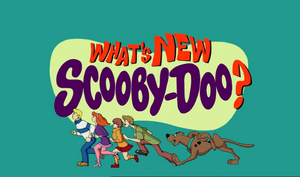
What's New, Scooby-Doo? is an American animated television series produced by Warner Bros. Animation for Kids' WB. It is the ninth incarnation of the Scooby-Doo franchise that began with Scooby-Doo, Where Are You! and the first Scooby-Doo series in a decade, since A Pup Named Scooby-Doo ended in 1991 and the first since both the foreclosure of Hanna-Barbera studios and William Hanna's death in 2001.

The New Scooby-Doo Movies is an American animated mystery comedy television series produced by Hanna-Barbera for CBS. It is the second television series in Scooby-Doo franchise, and follows the first incarnation, Scooby-Doo, Where Are You! It premiered on September 9, 1972, and ended on October 27, 1973, running for two seasons on CBS as the only hour-long Scooby-Doo series. Twenty-four episodes were produced, sixteen for the 1972–73 season and eight more for the 1973–74 season.
Hanna-Barbera's Superstars 10 is a series of 10 syndicated made-for-television animated films produced by Hanna-Barbera Productions as part of The Funtastic World of Hanna-Barbera programming block from 1987 to 1988, featuring the studio's popular animated characters: Yogi Bear, The Flintstones, The Jetsons, Scooby-Doo, Huckleberry Hound and Top Cat. The first 8 films used traditional cels, while the last 2 films used digital ink and paint.

Speed Buggy is an American animated television series, produced by Hanna-Barbera, which originally aired for one season on CBS from September 8, 1973, to December 22, 1973. With the voices of Mel Blanc, Michael Bell, Arlene Golonka, and Phil Luther Jr., the show follows an orange anthropomorphic dune buggy who alongside teenagers Debbie, Mark, and Tinker, solves mysteries while participating in racing competitions around the world. The series was produced by Iwao Takamoto, executive produced by William Hanna and Joseph Barbera, and directed by Charles A. Nichols.

Scooby-Doo, Where Are You! is an American animated comedy television series created by Joe Ruby and Ken Spears and produced by Hanna-Barbera for CBS. The series premiered as part of the network's Saturday morning cartoon schedule on September 13, 1969, and aired for two seasons until October 31, 1970. In 1978, a selection of episodes from the later animated series Scooby's All-Star Laff-A-Lympics and The Scooby-Doo Show were aired on ABC under the Scooby-Doo, Where Are You! title name, and was released in a DVD set marketed as its third season. It also aired on BBC One in the UK from 1970 to 1973. The complete series is also available on Boomerang, Max, and Tubi streaming services.
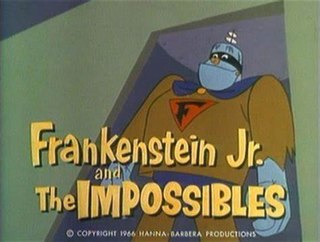
Frankenstein Jr. and The Impossibles is an American animated television series produced by Hanna-Barbera Productions. It premiered on September 10, 1966 on CBS, and ran for two seasons on Saturday mornings.
The ABC Saturday Superstar Movie — retitled The New Saturday Superstar Movie for its second season — is a series of one-hour animated made-for-television films, broadcast on the ABC television network on Saturday mornings from September 9, 1972 to November 17, 1973.
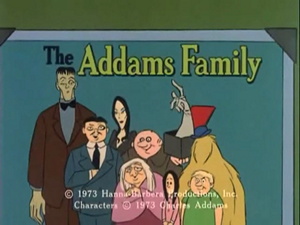
The Addams Family is an American animated sitcom adaptation of the Charles Addams single-panel comic for The New Yorker. The show was produced by Hanna-Barbera Productions for Saturday mornings in 1973, and was later rebroadcast the following season. Jackie Coogan and Ted Cassidy, who played Uncle Fester and Lurch, respectively, in the 1960s television series, returned in voice-over roles. The cast also included 10-year-old Jodie Foster, who performed the voice of Pugsley Addams. The show's theme music was completely different and had no lyrics or finger snapping, but retained a recognizable part of the four-note score from the live-action series.
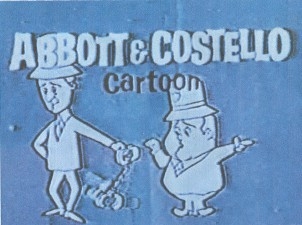
The Abbott and Costello Cartoon Show is an American half-hour animated series of the famous comedy duo that aired in syndication from September 9, 1967, to June 1, 1968. Each of the 39 individual episodes consisted of four five-minute cartoons. The cartoons were created jointly by Hanna-Barbera, RKO General, and Jomar Productions between 1965 and 1967. The series was syndicated by Gold Key Entertainment and King World Productions, with the rights now owned by Warner Bros. Television Distribution.
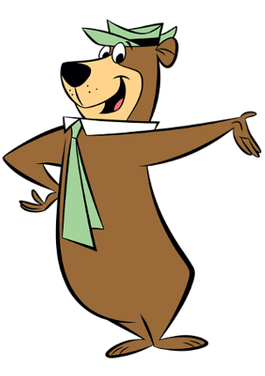
Yogi Bear is an anthropomorphic animal character who has appeared in numerous comic books, animated television shows, and films. He made his debut in 1958 as a supporting character in The Huckleberry Hound Show.

Laff-A-Lympics is an American animated comedy television series produced by Hanna-Barbera. The series premiered as part of the Saturday-morning cartoon program block Scooby's All-Star Laff-A-Lympics which consists of 24 episodes, on ABC in 1977. The show is a spoof of the Olympics and the ABC primetime series Battle of the Network Stars, which debuted one year earlier. It featured 45 Hanna-Barbera characters organized into teams which competed each week for gold, silver, and bronze medals. In each episode, the Really Rottens would try in each event to cheat only to get caught by Snagglepuss each time. One season of 16 episodes was produced in 1977–78, and eight new episodes combined with reruns for the 1978–79 season as Scooby's All-Stars. Unlike most cartoon series produced by Hanna-Barbera in the 1970s, Laff-A-Lympics did not contain a laugh track. Scooby’s Laff-a-Lympics was originally owned by Taft Broadcasting, Warner Bros. Domestic Television Distribution currently owns the series through its two in-name-only units, Warner Bros. Family Entertainment and Turner Entertainment.

















